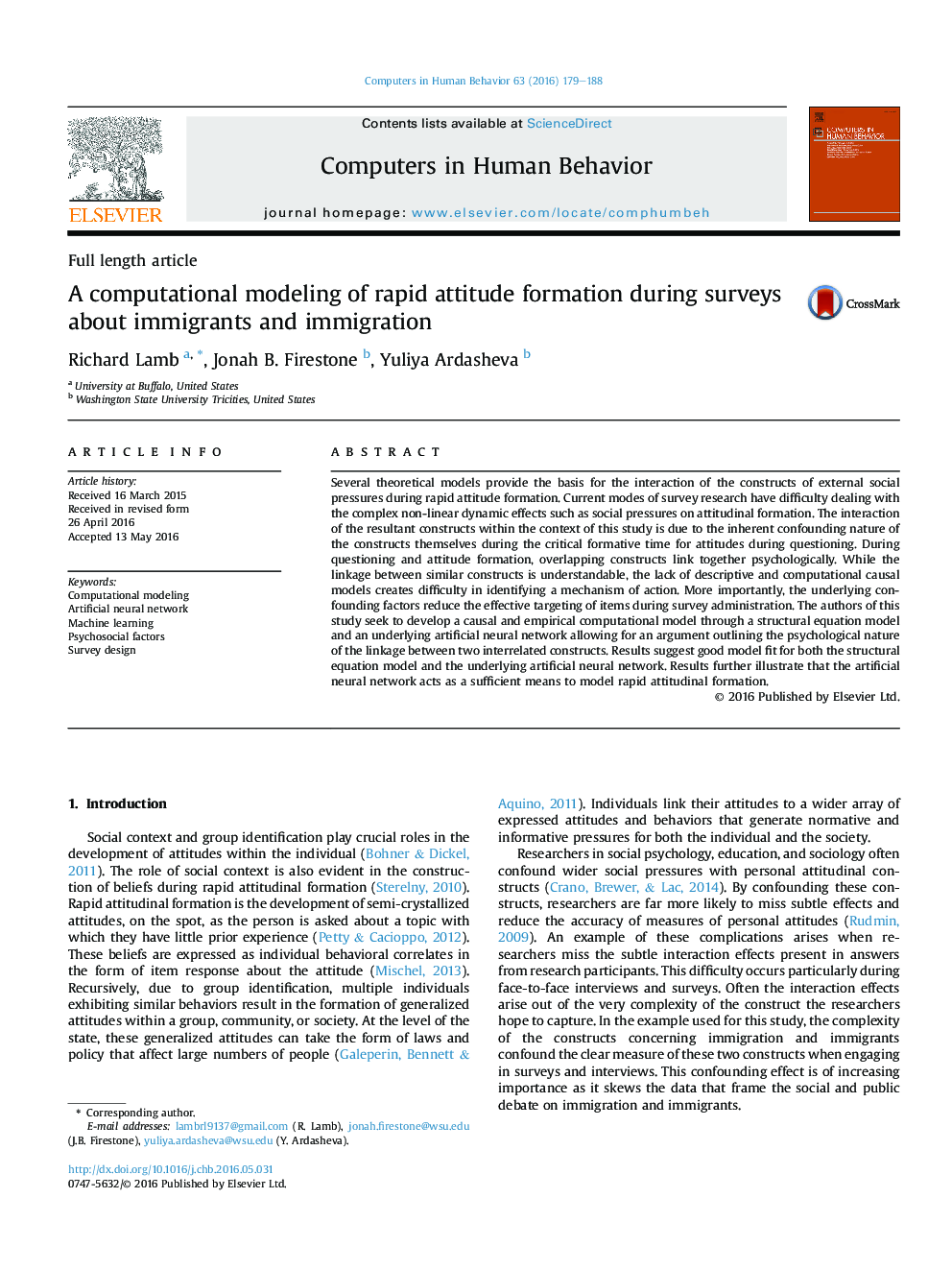| Article ID | Journal | Published Year | Pages | File Type |
|---|---|---|---|---|
| 6836582 | Computers in Human Behavior | 2016 | 10 Pages |
Abstract
Several theoretical models provide the basis for the interaction of the constructs of external social pressures during rapid attitude formation. Current modes of survey research have difficulty dealing with the complex non-linear dynamic effects such as social pressures on attitudinal formation. The interaction of the resultant constructs within the context of this study is due to the inherent confounding nature of the constructs themselves during the critical formative time for attitudes during questioning. During questioning and attitude formation, overlapping constructs link together psychologically. While the linkage between similar constructs is understandable, the lack of descriptive and computational causal models creates difficulty in identifying a mechanism of action. More importantly, the underlying confounding factors reduce the effective targeting of items during survey administration. The authors of this study seek to develop a causal and empirical computational model through a structural equation model and an underlying artificial neural network allowing for an argument outlining the psychological nature of the linkage between two interrelated constructs. Results suggest good model fit for both the structural equation model and the underlying artificial neural network. Results further illustrate that the artificial neural network acts as a sufficient means to model rapid attitudinal formation.
Keywords
Related Topics
Physical Sciences and Engineering
Computer Science
Computer Science Applications
Authors
Richard Lamb, Jonah B. Firestone, Yuliya Ardasheva,
